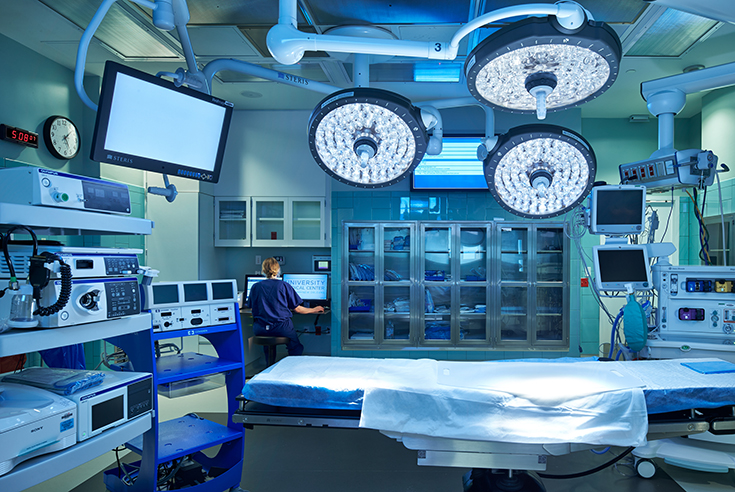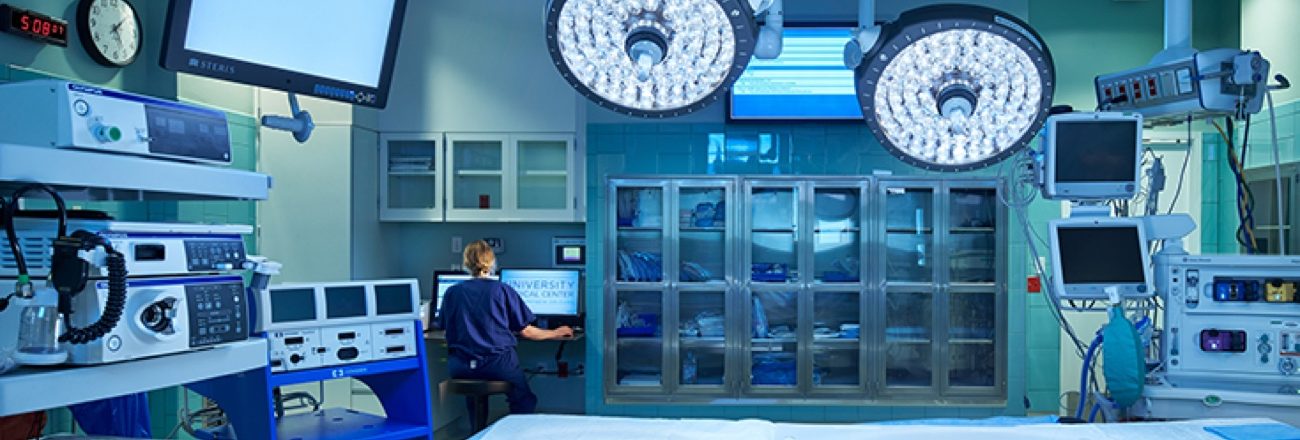
UMCNO Photo Credits: Sean Airhart (NBBJ)
As our East Regional Business Development and Marketing Guru, I like to highlight the cool people and projects we’re doing. This is a story about the necessity to connect people–in this case, a hospital’s C-Suite Executives, Healthcare Practitioners and Facilities Group.
A bit of background–we were originally hired as a medical equipment owner’s representative for University Medical Center New Orleans (UMCNO), coordinating with the state of Louisiana and Louisiana Children’s Medical Center (LCMC). The State of Louisiana designed and built the new hospital, which was being leased by LCMC.
But we must pause here to remember Hurricane Katrina. On August 29, 2005, Katrina would go on record as the most destructive natural disaster in U.S. history, devastating hundreds of thousands of people, homes and businesses, surmounting an estimated $96 billion in damage. Hospitals were not exempt. The former Charity Hospital was closed during the aftermath of Katrina and (under a new name) University Hospital reopened in 2006 as the Interim LSU Public Hospital (ILH).
Back to our story… In June 2013, LCMC acquired ILH with plans to develop a state-of-the-art UMCNO and move people and operations from the Interim LSU Hospital to their new home at UMCNO.
Mazzetti Associate Principal Peti Jones was the primary project manager hired one year prior to the big move. Peti worked closely with staff, nurses, physicians and the C-Suite to plan and coordinate the procurement of $115 million in medical equipment, as well as, plan the relocation of 6,500 pieces of medical equipment from ILH to the new UMCNO. Though the scope was originally targeting medical equipment, it quickly changed, adding responsibility to an unconventional role.
The Director of Facilities for LCMC Scott Landry asked Peti to help with correcting and adding to the internal and external signage for the medical center, ensuring code was met (local, DHH and Joint Commission) and wayfinding for patients, family and staff was sufficient. Additionally, the signage needed to be both aesthetically pleasing and affordable.
As previously mentioned, the State of Louisiana designed and built the new hospital with little to no input from LCMC. Consequently, the new, beautiful facility did not meet their unique needs. As construction changes were inevitable, the planning team began to implement changes immediately. Peti worked with the Facilities Group to help plan, track, coordinate, and finish these changes in an expedited timeline between the building’s turn over and move-in dates.
Prior to move-in, the facility underwent an inspection for licensure by the Louisiana Department of Health and Hospitals (DHH). This comprehensive inspection is required before the facility is authorized to actually treat patients—standard protocol. Peti was in the Command Center during the DHH inspection to address and correct any equipment, furniture or signage issues that could have risen. After successfully completing the licensure inspection, Peti remained onsite as an integral part of the patient move-in team.
The ILH transition team planned for this move for more than a year, conducting numerous mock-moving drills with multiple scenarios, so that staff would be the utmost prepared. Command Centers were staffed at both old and new locations–ILH and UMCNO–tracking each patient’s journey.
On Saturday, Augusts 1, 2015, 131 patients were successfully transported from ILH to UMCNO. More than 600 personnel, including 350 students, residents and physicians from LSU Health New Orleans and Tulane University School of Medicine, worked tirelessly to safely move patients from ILH to the new medical center, UMCNO. Over 20,000 hours of training were conducted in preparation for the move. (source: http://www.nola.com/health/index.ssf/2015/07/university_medical_center_move.html)
Peti was onsite during the patient move as an integral part of the team; her role was to help ensure the rooms were ready for each specific patient type and acuity. Two weeks later, the Ambulatory Care Building move took place, completing the herculean effort. After the completion of the successful move, Peti stayed onsite for about a month, helping onboard and train staff on the new equipment.
UMCNO Chief Medical Officer Dr. Peter Deblieux, spoke to Peti’s work.
She was able to straddle the ‘Ogre’, between Facilities and C-suite. There were equipment needs on specific floors that we were told had been resolved, but in fact, had not. Peti took a hands-on service, aligning the C-Suite and Facilities Group – to facilitate problem solving. Had she not, the risk was unmatched patient care needs on the day of the move–safety issues and patient care issues. We successfully transitioned without any significant snafu… It’s unheard of. She was a key player.
UMCNO by the Numbers

(Sources: LCMC Health and Nola)
